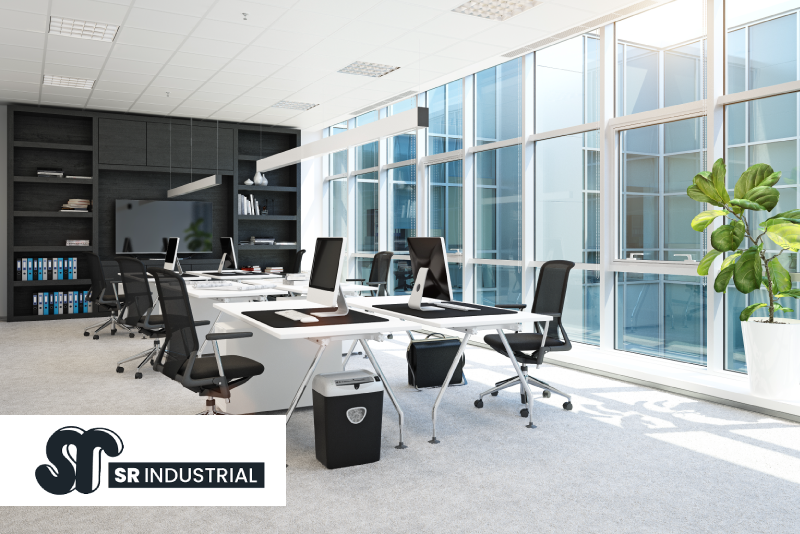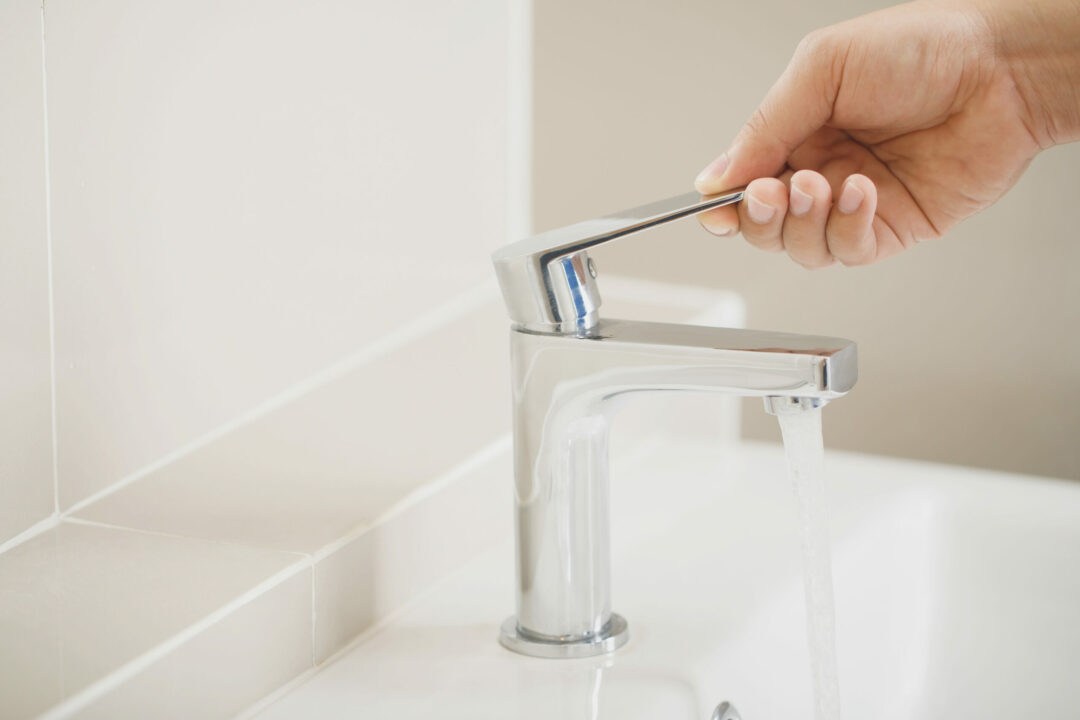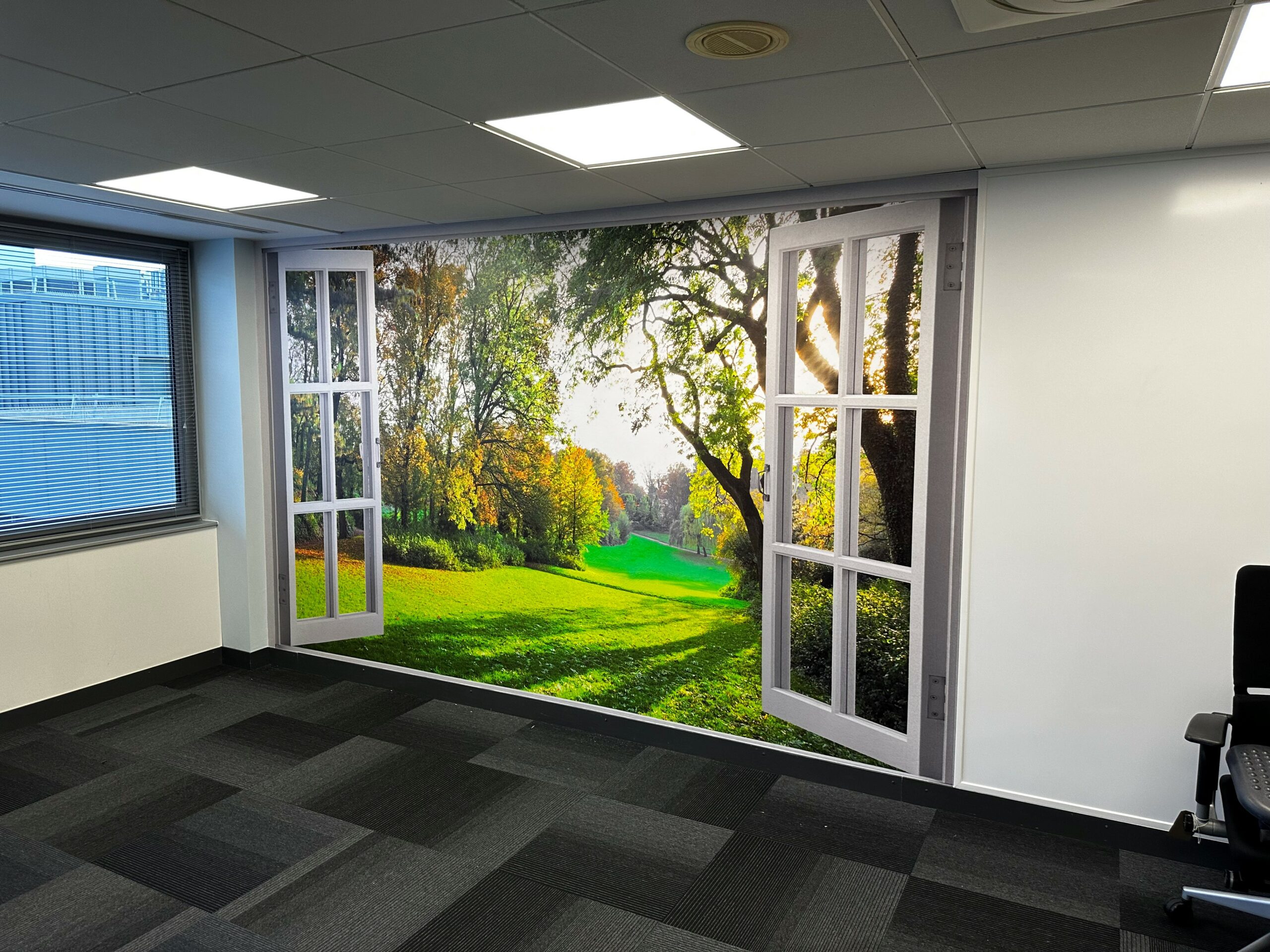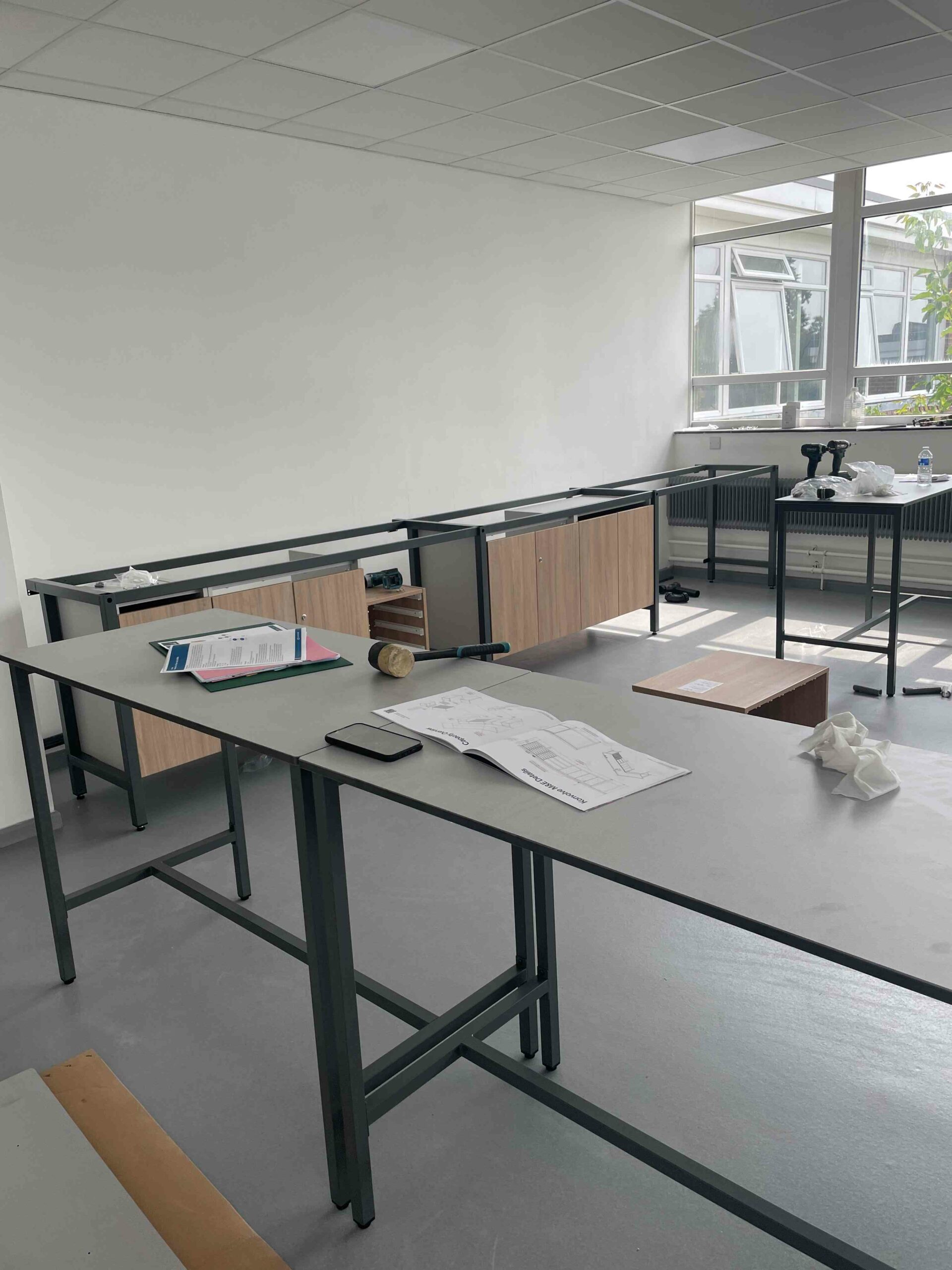Undertaking An Office Refurbishment

Welcome to SR Industrial’s guide to office refurbishment. As a business owner or office manager, you understand the importance of providing a workspace that is functional, comfortable, and visually appealing.
However, over time, your office space can become outdated and no longer meet the needs of your business. That’s where an office refurbishment comes in.
In this guide, we’ll explore the benefits of office refurbishment and provide a step-by-step guide to help you plan, design, and execute an office refurbishment project.
Why Refurbish Your Office Space?
There are many reasons why you might consider an office fit out. Perhaps your business has grown, and you need more space to accommodate new staff. Maybe your office is outdated and no longer reflects your brand or company culture. Or perhaps your office simply needs a fresh look to boost employee morale and productivity.
Whatever your reasons for considering an office refurbishment, the benefits are clear. A refurbished office space can increase employee satisfaction, boost productivity, and create a more professional and inviting environment for clients and visitors.
Planning Your Office Refurbishment
Before you begin your office refurbishment project, it’s important to plan carefully. This will help you stay on track, avoid unexpected costs, and ensure that the end result meets the needs of your business.
Analysing the Space
The first step in planning your office refurbishment is to analyse your current office space. Take note of the areas that are working well and those that need improvement. Consider the needs of your business and your employees, such as the number of staff, the type of work being done, and the equipment and furniture required.
Determining the Needs of Your Business
Once you have analysed your office space, it’s time to determine the specific needs of your business. This might include additional workspace, better lighting, improved storage solutions, or updated technology. Prioritising your needs is key to staying within budget and achieving your goals.
Measuring the Space and Making a Plan
To make the most of your office refurbishment, you’ll need to measure your space and create a plan. This will help you visualise the layout of your refurbished office and ensure that you have enough space for all of your needs. It’s also a good idea to involve your staff in the planning process to ensure that their needs are met and their feedback is heard.
Setting a Budget
Setting a budget is essential for any office refurbishment project. Determine how much you can afford to spend and allocate funds to each aspect of the project. It’s important to prioritise your needs and stick to your budget to avoid unexpected costs and delays.
Prioritising Your Needs
When setting your budget, it’s important to prioritise your needs. Focus on the areas of your office that are most in need of improvement and allocate funds accordingly. This will help you stay on track and ensure that you achieve your goals within your budget.
Estimating Costs
Once you have prioritised your needs and set a budget, it’s time to estimate the costs of your office refurbishment project. This will help you determine if your budget is realistic and make any necessary adjustments. Be sure to include the cost of materials, labour, and any necessary permits or licences.
Selecting a Project Team
An office refurbishment project requires a team of professionals to ensure that it is executed smoothly and efficiently. Consider hiring an interior designer, architect, or project manager to oversee the project and ensure that it meets your goals and budget.
Assigning Roles and Responsibilities
Once you have assembled your project team, it’s important to assign roles and responsibilities. Clearly communicate the expectations and goals for the project and ensure that each team member understands their role. Regular communication and collaboration are key to a successful office refurbishment project.
Designing Your Refurbished Office
Once you have established your budget and assembled your project team, it’s time to create a design plan for your refurbished office. This is where the fun begins, as you get to choose the colours, materials, furniture and decor that will make your office look and feel amazing.
Designing the Layout
When designing your office layout, think about the flow of your space and how your employees move around it. Consider whether you need more collaborative spaces or private areas for focused work. A well-designed office should feel spacious and easy to navigate, with plenty of natural light.
Choosing Colours, Materials, and Furniture
Choosing colours, materials, and furniture for your office refurbishment is an important part of the process. The colours you choose can affect mood and productivity, while the materials you choose can impact durability and maintenance. Be sure to choose furniture that is comfortable and ergonomic, as this can help prevent workplace injuries and improve employee satisfaction.
Incorporating Brand Identity and Company Culture
Your office design should reflect your brand identity and company culture. This can be achieved through the use of colours, artwork, signage, and decor that convey your company’s values and personality. A well-designed office that reflects your brand can help attract and retain top talent, as well as impress clients and visitors.
Executing Your Office Refurbishment
With your design plan in place, it’s time to execute your office refurbishment project. This can be a daunting task, but with the right team in place and a clear plan, it can be done smoothly and efficiently.
Preparing the Workspace
Before any work begins, it’s important to prepare your workspace. This might include removing furniture and equipment, protecting floors and walls, and ensuring that your staff can continue to work safely and comfortably during the refurbishment process.
Ensuring Safety and Security
During the refurbishment process, it’s important to ensure that your staff and visitors are safe and secure. This might include installing temporary barriers and signs, conducting regular safety checks, and ensuring that contractors and vendors follow safety protocols.
Minimising Disruptions
Office refurbishment projects can be disruptive to day-to-day business operations. It’s important to minimise disruptions as much as possible, by scheduling work during off-hours and keeping your staff informed about any changes or disruptions to their work environment.
Implementing the Plan
With your workspace prepared, it’s time to implement your office refurbishment plan. This might include installing new lighting, flooring, and furniture, as well as painting walls and adding decor. Regular communication with your project team is key to ensuring that the project is on track and any issues are addressed quickly.
Coordinating with Contractors and Vendors
If you have hired contractors or vendors for your office refurbishment project, it’s important to coordinate with them regularly to ensure that the project stays on track. Regular check-ins and updates can help avoid delays and ensure that everyone is working towards the same goals.
Managing the Timeline
Managing the timeline of your office refurbishment project is essential for keeping costs under control and avoiding delays. Regular communication with your project team and contractors can help ensure that deadlines are met and any issues are addressed quickly.
Completing Your Office Refurbishment
With your office refurbishment project nearing completion, it’s time to focus on the finishing touches and ensuring that your new space is ready for use.
Finalising the Details
Finalising the details of your office refurbishment project can be a fun and exciting process. This might include adding artwork and decor, testing out new equipment and furniture, and ensuring that all systems are functioning properly.
Quality Control and Final Inspections
Before your staff moves back into your refurbished office, it’s important to conduct quality control and final inspections. This can help ensure that everything is in working order and that any issues are addressed before your staff begins working in the new space. Be sure to check all electrical and mechanical systems, as well as the functionality of all furniture and equipment.
Celebrating Your New Workspace
Once your office refurbishment is complete, it’s time to celebrate! Host a grand opening or ribbon cutting ceremony to show off your new space to clients, visitors, and staff. This can be a great way to build morale and show your appreciation for everyone who helped make your refurbishment project a success.
Maintaining Your Newly Refurbished Office
Maintaining your newly refurbished office is essential for ensuring that it stays looking and functioning its best for years to come. This might include regular cleaning and maintenance, as well as ongoing updates and improvements as your business grows and evolves.
Maintenance and Upkeep
Regular maintenance and upkeep can help ensure that your office remains clean, functional, and safe for your staff and visitors. This might include tasks such as cleaning carpets and floors, dusting surfaces, and ensuring that all equipment and systems are functioning properly.
Staying Organised and Tidy
Staying organised and tidy is essential for maintaining a professional and inviting workspace. Encourage your staff to keep their workspaces clean and organised, and provide plenty of storage solutions to help them stay on top of their work.
Adapting to Future Business Needs
As your business grows and evolves, your office space may need to adapt as well. Stay flexible and open to new ideas and needs, and be willing to make changes to your workspace as necessary.
This can help ensure that your office remains a productive and welcoming environment for your staff and visitors.


